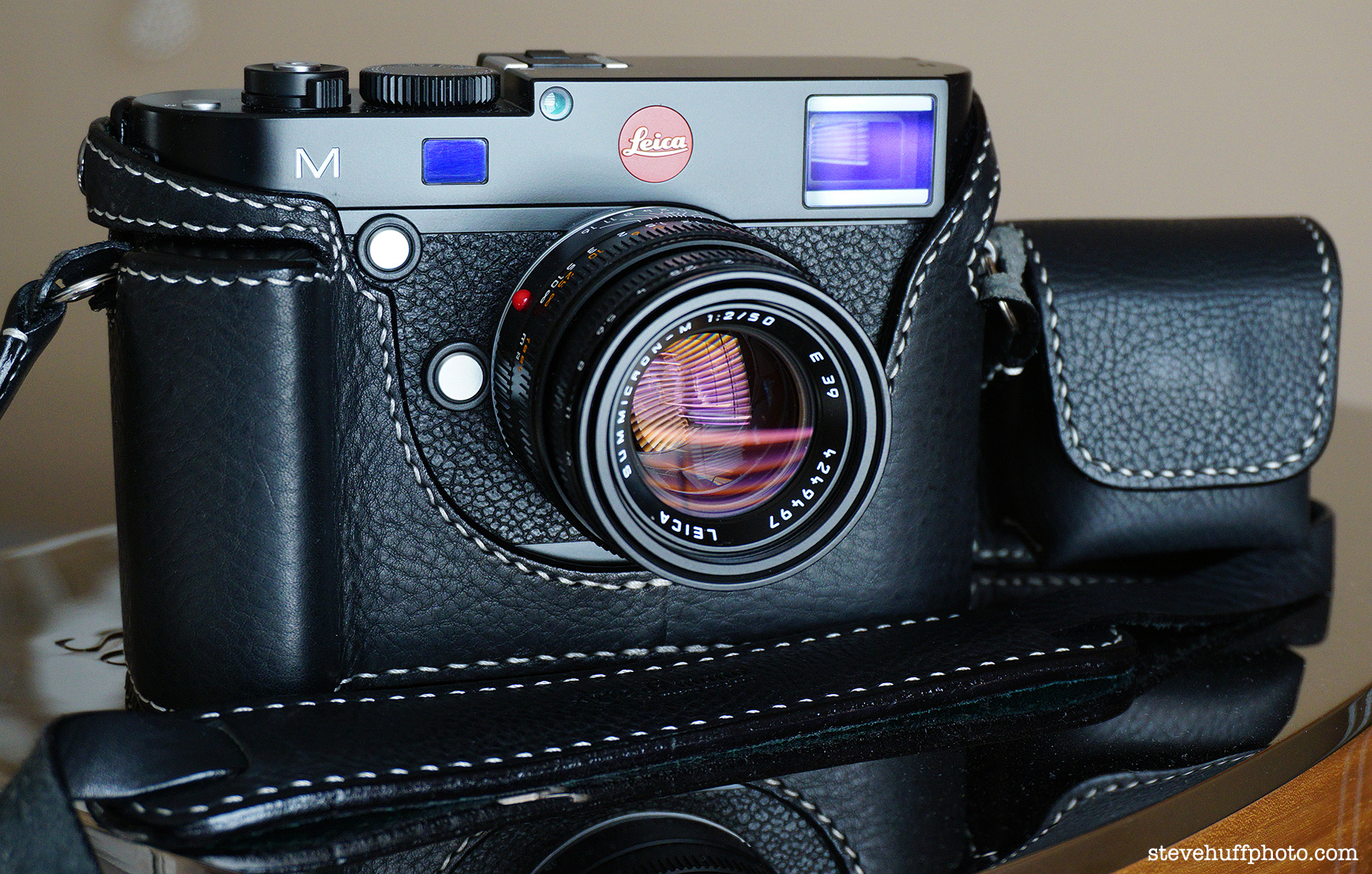
(VIDEO) Why the Leica M 240 is better than the M9
by John Ricard
Yesterday I posted a video by John Ricard as to why the Leica M9 is better than the Leica M 240. Today he talks about why the M 240 is better than the M9. See the video below, and enjoy! Be sure to check out John on Instagram.




John Ricard –
Thank you for your invitation to email you, to see your pictures from your M9 that “blow you away”.
I have owned the Leica M8 and M9 and love the image quality of these CCD cameras and I have also have taken pictures that blow me away.
The M9 produced better images than the M8 and was able to do it under more challenging lighting situations. Likewise, the M240 is able to produce better images than the M9 under even more adverse conditions.
All three of these cameras, the CCD and the CMOS sensor, have produced photographs for me that I believe are compelling from an artistic standpoint, regardless of the standpoint of what you termed the intellectual level.
I can see no artistic difference in any of these cameras’ output, and always find it difficult to understand why some folks believe the M9 has some sort of undefinable higher ground, a je ne sais quoi, just because it captures photons using a CCD sensor.
All three, the M8, M9 and M240, can blow you away.
Rick
Never on the 240? really!? I certainly would not say that.
Not sure if you watched my other video “Why the M9 is better than the M240”. In that one, I referenced an article by David Farkas where he “proved” that in a side by side comparison, most people can’t tell an M9 image from an M240 image. So I understand what you are saying on an intellectual level. However, the fact still remains, that I periodically get images that totally blow me away straight out of camera from my M9. Never happened with my M240. If you’d like to email me, I’d be happy to show you some samples of what I’m talking about. johnricardnyc at gmail.
I had a “better” Sony camera, and didn’t like shooting with it at all. A7r was loud, with bad ergo. M9 is perfect.
Shooting a wedding with an M9 and an A7r, I got a higher percentage of keepers from the M9, and enjoyed using it far more.
I miss the body of the M9, but the M-P is an improvement in all other ways.
Peter –
The M9 sensor is 10 years old. The more modern CMOS sensors preform so much better. You can continue to hold on to some romantic opinion that CCD has some sort look, but it just doesn’t hold up to any objective reality.
I have owned the M8, M9 and the M. Each one has progressed and produced better files. Do you really believe Leica has gone backwards in technology?
The sensor is just a way to turn photons into an electricity. To quote Stefen Daniel, the look is in the processing. I think you are confusing CCD technology with image processing. Here is the quote from Stefen Daniel, Leica Camera.
“Many people think there is a big difference in the touch and feel and the look and feel of the CCD vs CMOS. We think a pixel just renders light or transforms light into electricity. And the look and feel is done in the image processing. On the other hand, the CMOS sensors have a lot of advantages such as video and live view and we therefore think that the CMOS have the future at Leica. – Stefen Daniel, February, 2014”
Rick
I own a Sony a6000 and I really dislike it. Killer buffer and great autofocus, but I don’t produce good images with it. I connect with my Leica’s much better.
Had I ever found a decently priced M-P I certainly would have bought it. Instead, I sold the M240 and bought a Monochrom M9. So now I have 2 cameras with a horrendous buffer 😉
I enjoyed both videos!
I don’t shoot an M, so I can’t comment except generically
I personally always thought that the best camera is the one we form an emotive bond too, (we tend to take it with us more and push ourselves to get the best from it) and it SEEMS that more people are head over heals for the M9 than the 240, despite the better spec sheet on the latter
I had already seen the article mentioned in John’s video about the comparison between M and M9 files. It’s a good article, actually full of decent advice about how to use HSL and tone curves to control colours which can be applied to many shots and many cameras.
It wasn’t lost on me that it’s a bit of extra work to get the M looking like 9 and doesn’t that say something about the 9?
Many reviewers cite the 240 having a 2m RF calibration (compared to 1m on the 9) as a big plus, but John didn’t mention it…
Seems like the perfect Leica M is the M9 sensor and body, combined with the 240 M-P buffer and RF mechanism, tethering and weather sealing.
I can’t imagine that was beyond their design team… but ce la ve huh!
mm…not if you enjoy using a rangefinder!
Peter near enough any CCD camera with fine lens from a decade ago gives M9 CCD look :
Especially Olympus C2100uz and C2040, Minolta A2, Fuji 4800z, Sony F717, Canon G1, Samsung Ex1.
(Shallow dof, dynamic range, detail of course superior M9 as well as photographing enjoyment).
Why not just get a better Sony camera?
John,
Thanks for producing these videos.
Have you signed my “Prosophos Open Letter to Leica?” ( https://prosophos.com/2013/11/16/an-open-letter-to-leica/ )
Apologies if you have, but over 650 photographers have signed it and I didn’t see your name when I scrolled through the signatures.
—Peter.
I loved and still love my M9 and M9-P cameras and the crisp, rich files they produce. It’s the M-P 240 I grab though when I’m heading out these days. That 2gig buffer makes all the difference. It’s a much nicer camera to use. Much smoother operation. I’ve also come to really appreciate the added headroom in the highlights as well.
Don’t get me wrong, when the conditions are right, there’s not much that comes close to the M9 files. I just couldn’t go back to those restrictions anymore. When I look at my old M9 images, I see an awful lot of clipped highlights and pink/purple colour bleeds (particularly in lips in lower light). I also know there were plenty of times when I saw a shot, but had no room left in the buffer.
Truth be told, I made this video the night before I packaged my M240 after selling it on the Fred Miranda forum. I used the money to buy an M9 Monochrom. So until the next M comes out, I’ll be rolling with the M9 and original version Monochrom.
I just wish the M262 had the 2 Gig buffer. I think it would have been a great camera for a lot of people. Personally, I still would have preferred the M-P over the M262, but I know a lot of people would have been fine with a 2 Gig buffer version of the M262,
I’m looking forward to his post tomorrow “why just about anything else is better than either of these”
Great comments, John… thanks. The M9 is the camera which comes closest to the Leica M2 I had for years….. bottom line… they just make good pictures…I do not aspire to the gadgets and accessories of the M240 and settled on the (M9) Monochrome and (M9 size) M262 as a pair of working cameras…. gets the higher ISO performance in B&W and great performance and color….
Stuart
Great Vid’s, thx Steve & John.
So basically the M9 is a better camera in both vids, apart from the range finder mech in the M9 does need re-calibrating more. (which is a pain)
M9 all the way!